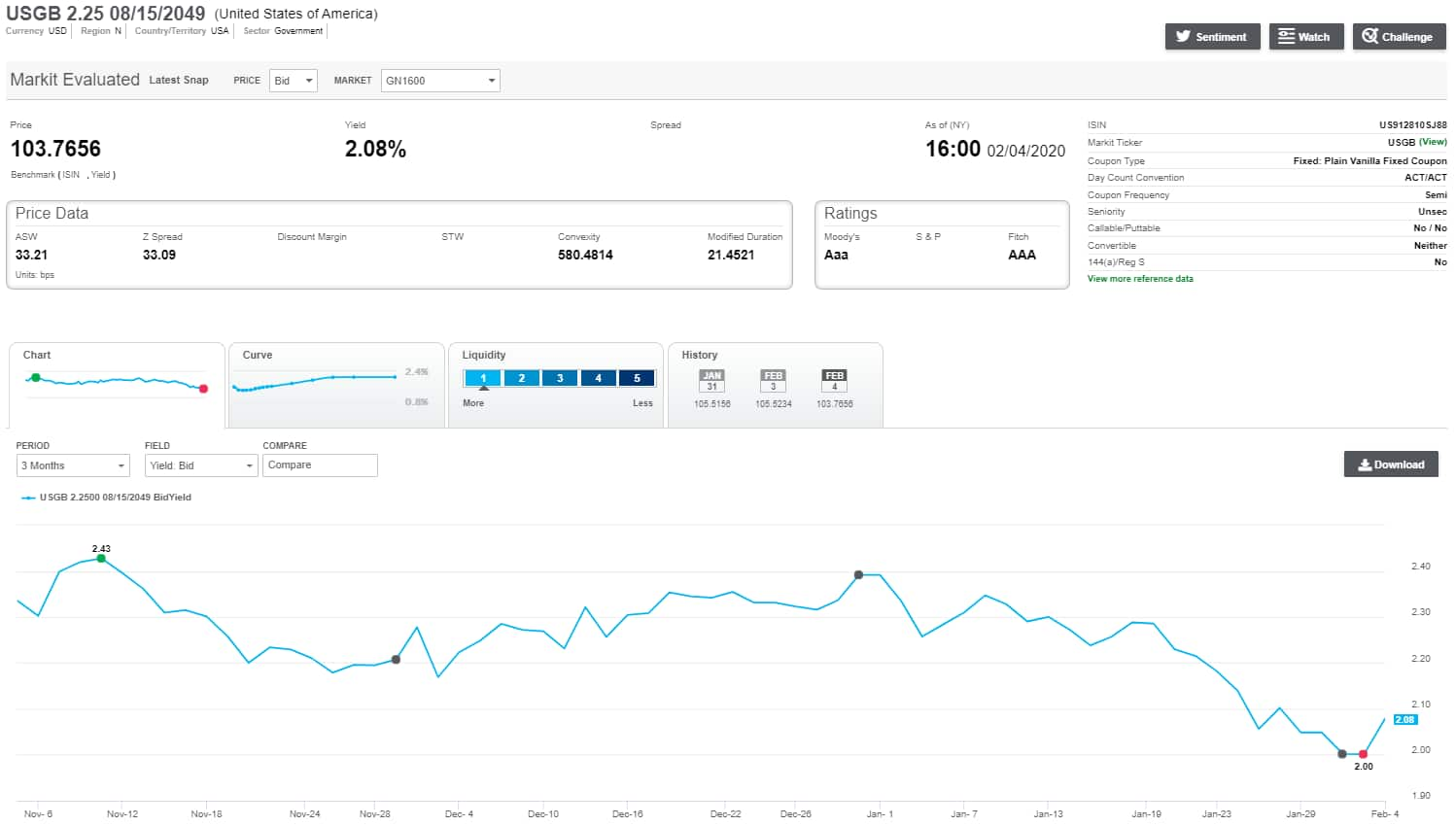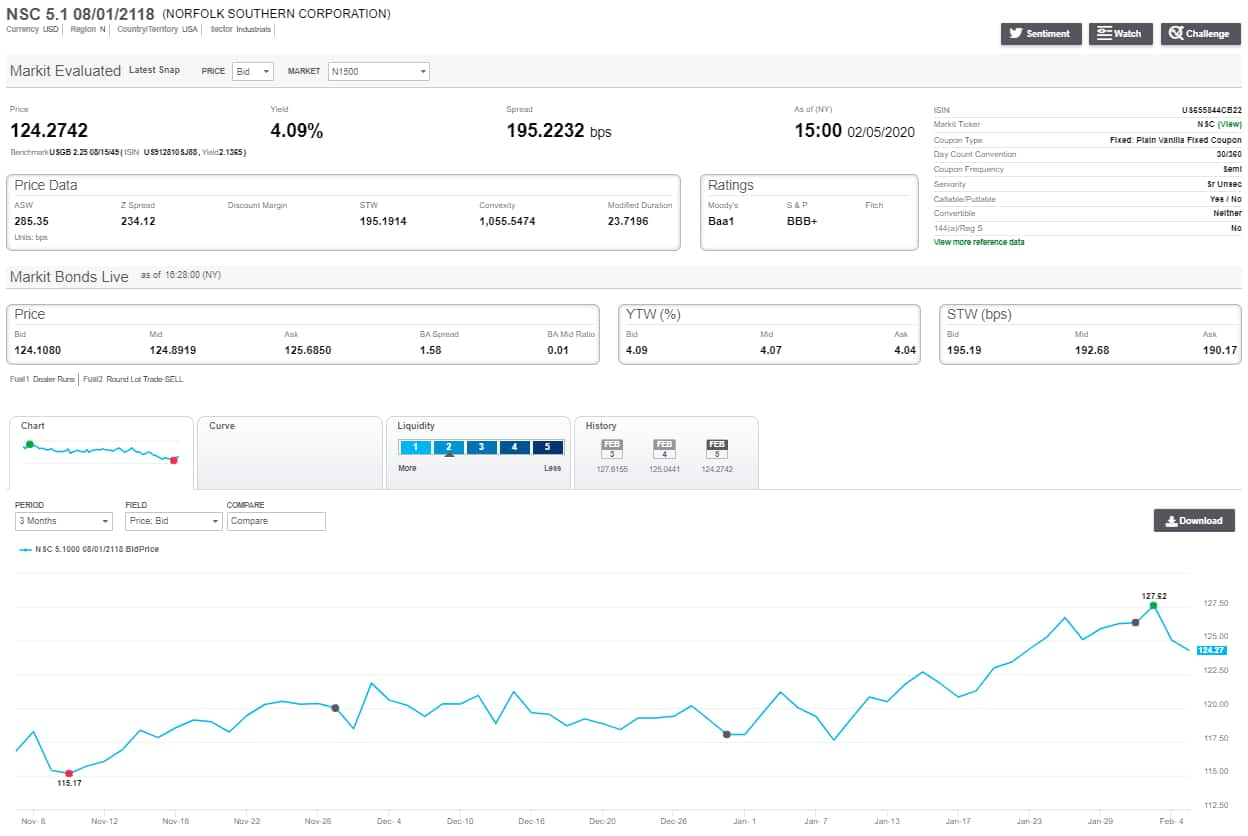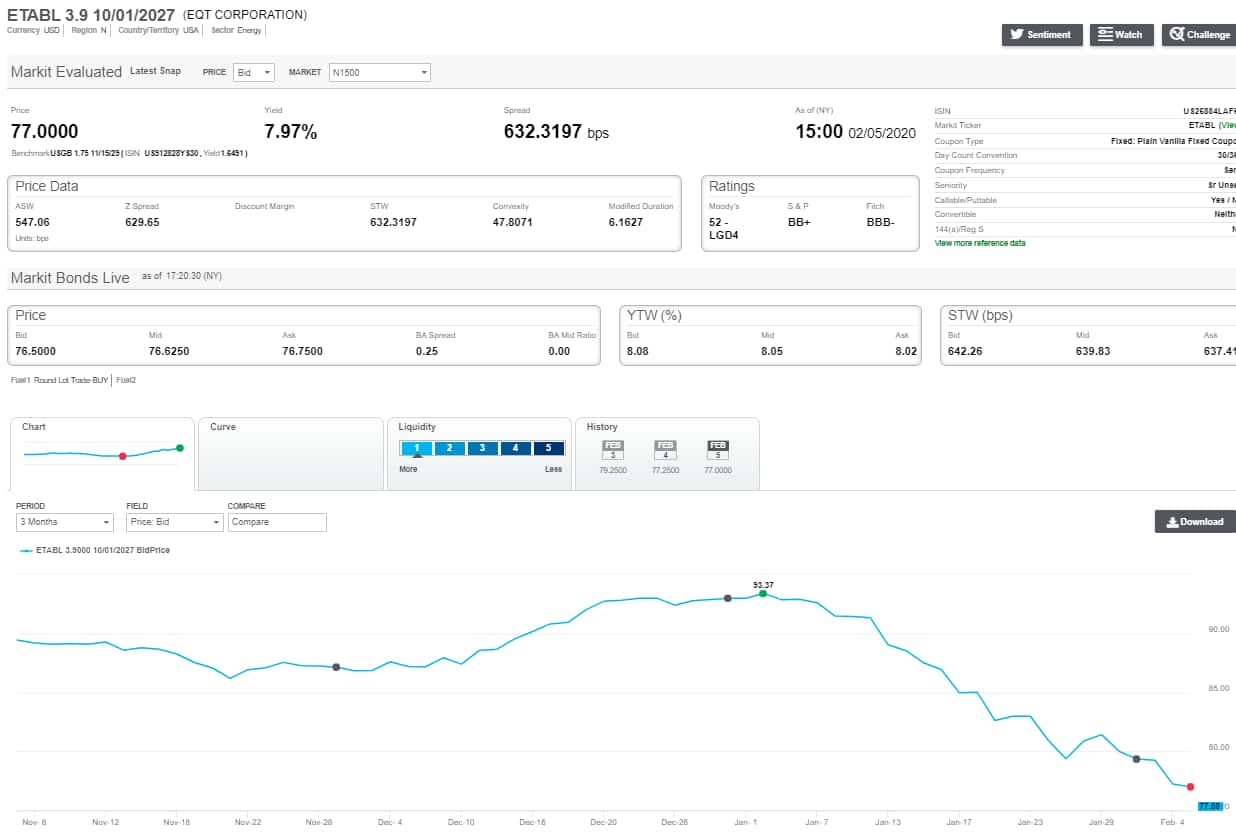Corporate Bond Pricing Data, January 2020 Recap
In this week's post, Michael Skorczynski from our IHS Markit Corporate Bond Pricing team has highlighted U.S. Treasury movement for January 2020, and delivered a review of the Investment Grade market sector and key up/down movers within the Investment Grade market.
Over the month of January, the US Treasury curve tightened. The table below summarizes weekly and monthly performance across the curve, followed by a snapshot of the 30 year's performance in more detail, sourced from our Price Viewer portal.

The 30-year yield started the month at 2.39%, then tightened steadily over the month finishing at 2%.

Investment Grade Market Review
The table below summarizes weekly and monthly sector performance across the iShares iBoxx $ Investment Grade Corporate Bond ETF.

Top Moving Issuers within the Investment Grade Market
The best preforming IHS Markit iBoxx USD Investment Grade Index bonds in January are show in the table below. Kaiser Foundation Hospitals, Allergan, Norfolk Southern, and Rockwell Collins all had the below bonds increase in value over the course of the month.
The price increase was driven largely by benchmark rate tightening and can be seen with the Norfolk Southern bond. The credit spread widened by 9 bps, but the price of the bond increased by $8.29 due to its long duration (2118 maturity). The screenshot below displays the bond's price performance over the last 3 months.


Below are the worst preforming IHS Markit iBoxx USD Investment Grade Index bonds of January.
EQT Corp, EQM Midstream Partners, LP, Cenovus Energy, Energy Transfer are all energy firms which have had their bond prices decrease over the month of January. This price movement reflects the decline in WTI Crude during January. EQT Corp is the month's biggest loser with its 2027 bond falling $13.61 and equity declining 45% over the same period. The screenshot below displays the bond's price performance over the last 3 months.

S&P Global provides industry-leading data, software and technology platforms and managed services to tackle some of the most difficult challenges in financial markets. We help our customers better understand complicated markets, reduce risk, operate more efficiently and comply with financial regulation.
This article was published by S&P Global Market Intelligence and not by S&P Global Ratings, which is a separately managed division of S&P Global.